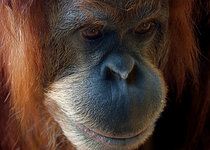New online tool monitors endangered species trading
A new online tool allows the monitoring of the trading of endangered wildlife and plants in 175 countries worldwide.

 A new interactive tool which allows the online monitoring of the trading of endangered wildlife and plants in 175 countries has been unveiled by the Convention on International Trade in Endangered Species (CITES) as part of its 35th anniversary.
A new interactive tool which allows the online monitoring of the trading of endangered wildlife and plants in 175 countries has been unveiled by the Convention on International Trade in Endangered Species (CITES) as part of its 35th anniversary.
The CITES Trade Data Dashboards, which are administered by the United Nations Environment Programme (UNEP), are specifically designed to monitor the global trading of certain animals and plants as more and more species are used, and often over-used, as part of human activities. The aim of the tool is to ensure that the international trade of certain specimens does not go so far as to threaten their survival.
Around 5,000 species of animals and 28,000 species of plants are currently protected by CITES against over-exploitation through international trade. Each protected species is placed within one of three appendices depending on the extent of the threat towards it and the controls that apply to its trade.
CITES Secretary General John Scanlon said, "The CITES trade dashboards make the trade datasets easier to use and accessible by a wider audience…We have records going back many decades on trade under the Convention, and today we have over ten million such records."
More than 10 million trade transactions are reported to have been documented since the Convention was established in 1975. One such transaction trend shows a particularly large amount of crocodile skin being traded, especially in Columbia, where a major export is the skin of the spectacle caiman.
Similarly, the most widely-traded species of mammal has proven to be the long-tailed macaque, a native of Southeast Asia. The CITES dashboard shows more than 35,000 being traded in the five years from 2004 to 2008. While this particular species are not currently endangered, it is believed they are being increasingly targeted for use in pharmaceutical testing and development.
The dashboard displays data on internationally-regulated species that are legally traded under CITES for purposes such as food, personal care, housing, clothing and scientific and medical research. Users are able to view data by taxonomic group, type of specimen as well as year range within five year intervals.
There are both global and national Trade Data Dashboards. Global dashboards monitor and analyze global trade trends while national dashboards give specific information for each country. By consulting dashboards on the CITES website, users will be able to determine which species are being traded and the level at which they are being traded either globally or within particular areas.
Director of UNEP-WCMC Jon Hutton said the tool "complements others such as the recently launched Integrated Biodiversity Assessment Tool (IBAT), which provides general information on biodiversity and natural habitats worldwide."
The IBAT, which was established in 2008 by a partnership of non-governmental organizations and private sector firms, is designed to allow companies to incorporate biodiversity concerns at the earliest stage of project planning. IBAT provides businesses with information on both protected and unprotected areas of terrain and marine biodiversity worldwide.
Author: Tom Watts | Climate Action
Images: macinate | Flickr
